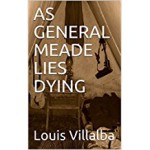Now he remembered coming down through the timber in the dark holding the horse’s tail when you could not see and all the stories that he meant to write. About the half-wit chore boy who was left at the ranch that time and told not to let any one get any hay, and that old bastard from the Forks who had beaten the boy when he had worked for him stopping to get some feed. The boy refusing and the old man saying he would beat him again. The boy got the rifle from the kitchen and shot him when he tried to come into the barn and when they came back to the ranch he’d been dead a week, frozen in the corral, and the dogs had eaten part of him. But what was left you packed on a sled wrapped in a blanket and roped on and you got the boy to help you haul it, and the two of you took it out over the road on skis, and sixty miles down to town to turn the boy over. He having no idea that he would be arrested. Thinking he had done his duty and that you were his friend and he would be rewarded. He’d helped to haul the old man in so everybody could know how bad the old man had been and how he’d tried to steal some feed that didn’t belong to him, and when the sheriff put the handcuffs on the boy he couldn’t believe it. Then he’d started to cry. That was one story he had saved to write. He knew at least twenty good stories from out there and he had never written one. Why?
From “The Snow of the Kilimanjaro” by Ernest Hemingway
In this story, Hemingway talks about a writer’s unfinished work. One writes, rewrites, proofreads, makes changes, and corrects over and over. It is a never-ending task. How do writers know the last version is the best? Books can always be improved. Writing is not different than life. And life is an unfinished project. I had never experienced such a vivid notion until the day I visited the studio of Manuel Lepe, a famous local artist in Puerto Vallarta, Mexico. This painter had died suddenly a few years earlier. The room was kept as it was the moment he suddenly passed away: his jacket hanging on a chair, the half-smoked cigarette, the full ashtray, the incomplete painting he had been working on. Every detail bespoke the untimely interruption of his work and his life.



































